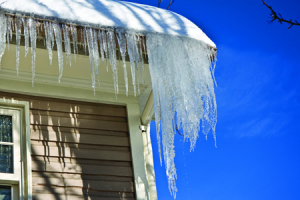You may be tempted to forego a home inspection if you’re buying in a competitive market, especially when multiple offers are a possibility. But before you make a decision on whether to include a home inspection in your contractual offer, be aware that different seasons and weather conditions tell different stories about a home’s condition.
While some shortcomings of a home will not be as evident under snow coverage, winter also presents an opportunity to see other things that snow can teach us about the condition of a house. For example, a snow-covered roof may hide the overall state of the shingles and underlay, while large spotty patches of melted snow on a roof and dripping icicles are indicators of insulation deficiency. Likewise, snow piled on the outside of a home can show tell-tale signs about the inside of a home, revealing foundation cracks and basement leakage problems.
Every season teaches us something about the condition of a home, but cold weather and snow may prevent a home inspector from accurately evaluating certain features, such as the grade of the land. You’ll want to know if rain and moisture drains away from rather than toward the house. In rural areas, testing the health of a septic system is a task much better left for warmer weather. Also remember that it’s not possible to test the state of an air conditioning system during cold weather.
In order to protect yourself from possible future expenses that result from a winter inspection that cannot uncover certain conditions, contact Inspect it All to understand your options.
While some shortcomings of a home will not be as evident under snow coverage, winter also presents an opportunity to see other things that snow can teach us about the condition of a house. For example, a snow-covered roof may hide the overall state of the shingles and underlay, while large spotty patches of melted snow on a roof and dripping icicles are indicators of insulation deficiency. Likewise, snow piled on the outside of a home can show tell-tale signs about the inside of a home, revealing foundation cracks and basement leakage problems.
Every season teaches us something about the condition of a home, but cold weather and snow may prevent a home inspector from accurately evaluating certain features, such as the grade of the land. You’ll want to know if rain and moisture drains away from rather than toward the house. In rural areas, testing the health of a septic system is a task much better left for warmer weather. Also remember that it’s not possible to test the state of an air conditioning system during cold weather.
In order to protect yourself from possible future expenses that result from a winter inspection that cannot uncover certain conditions, contact Inspect it All to understand your options.


Comments
Post a Comment